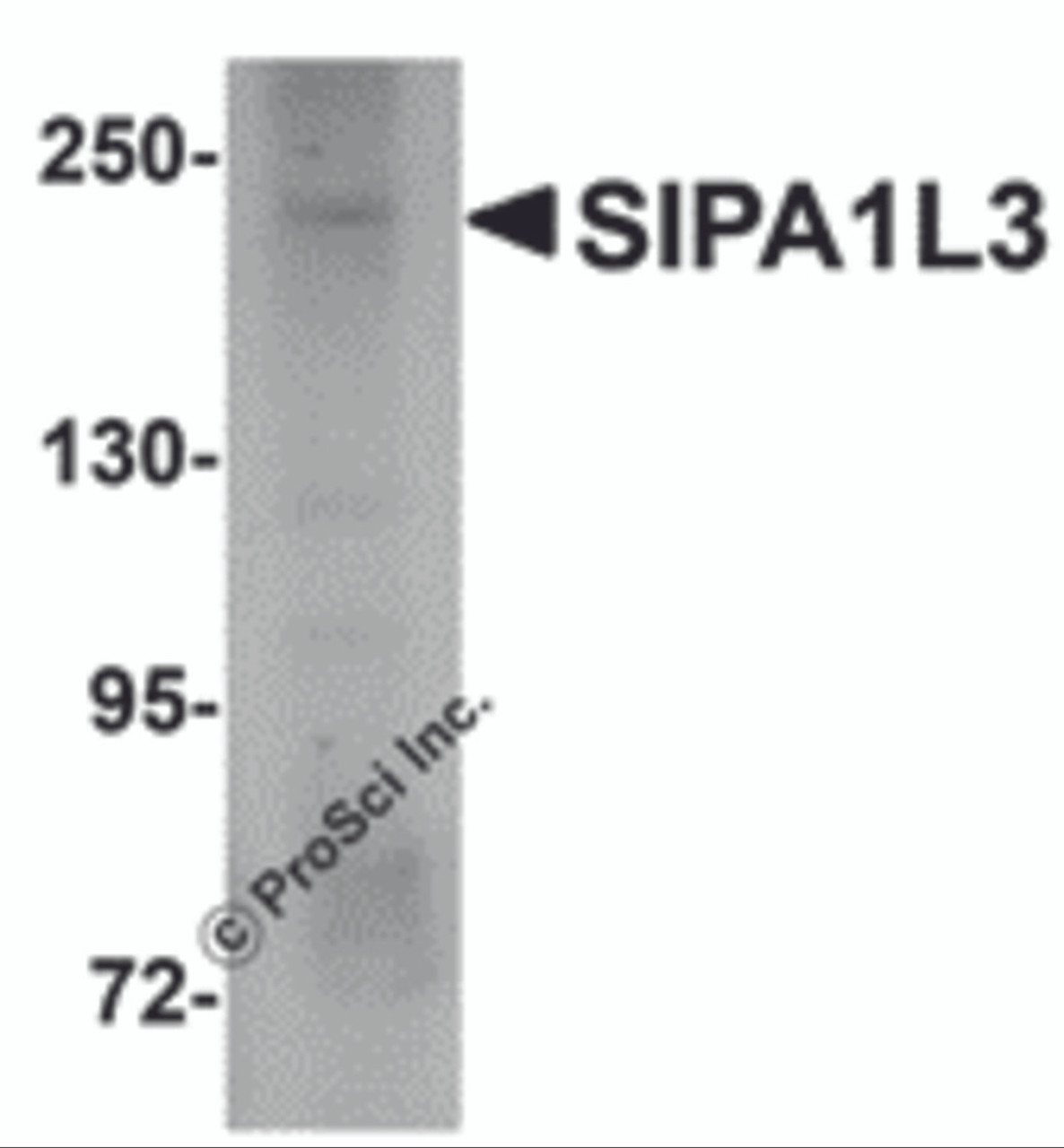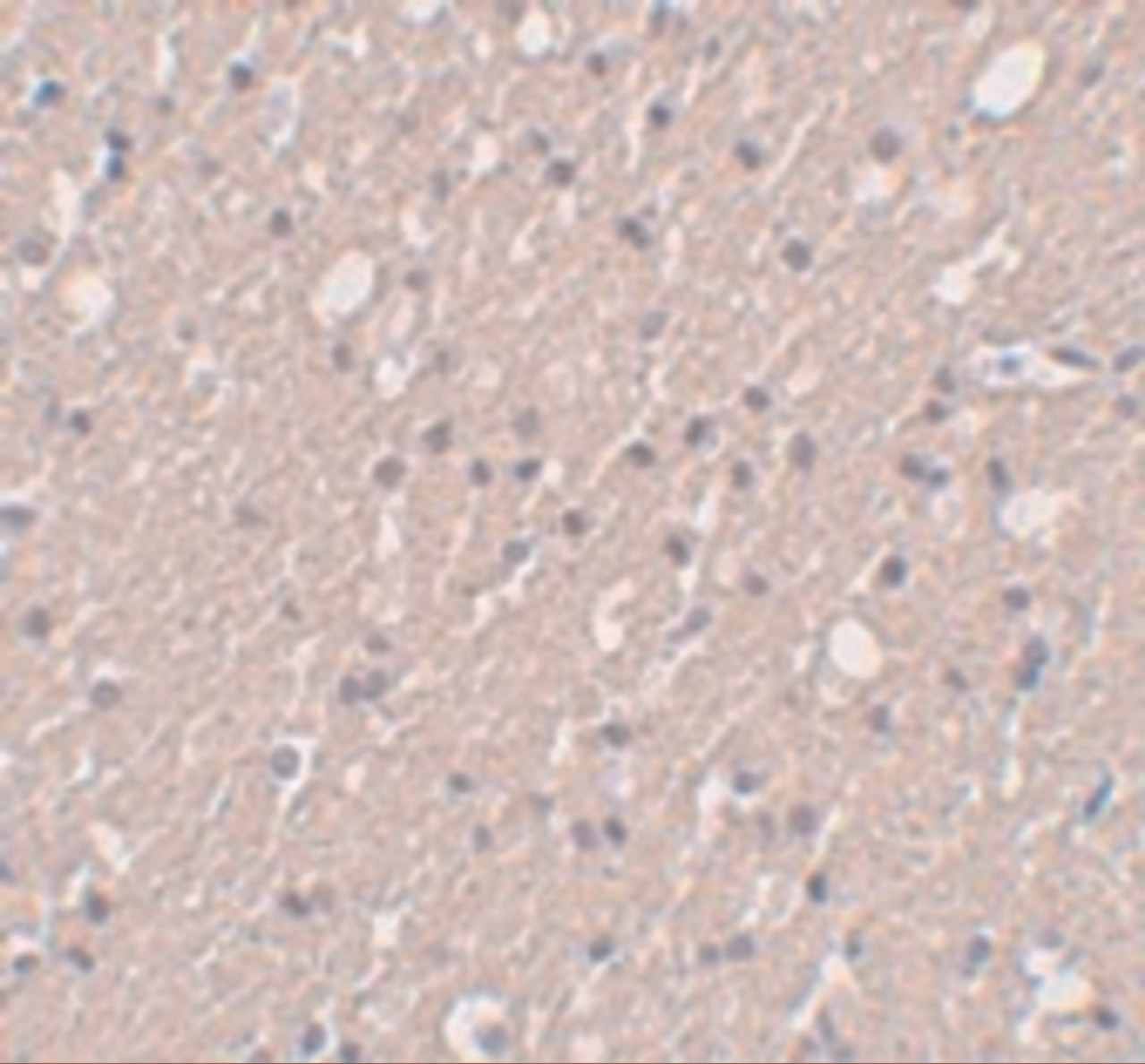Product Description
SIPA1L3 Antibody | 5495 | ProSci
Host: Rabbit
Reactivity: Human, Mouse, Rat
Homology: N/A
Immunogen: SIPA1L3 antibody was raised against a 15 amino acid synthetic peptide from near the amino terminus of human SIPA1L3.
The immunogen is located within amino acids 80 - 130 of SIPA1L3.
Research Area: Cancer
Tested Application: E, WB, IHC-P, IF
Application: SIPA1L3 antibody can be used for detection of SIPA1L3 by Western blot at 1 μg/mL. Antibody can also be used for immunohistochemistry starting at 5 μg/mL. For immunofluorescence start at 20 μg/mL.
Antibody validated: Western Blot in human samples; Immunohistochemistry in human samples and Immunofluorescence in human samples. All other applications and species not yet tested.
Specificiy: N/A
Positive Control 1: Cat. No. 1220 - SK-N-SH Cell Lysate
Positive Control 2: Cat. No. 10-301 - Human Brain Tissue Slide
Positive Control 3: N/A
Positive Control 4: N/A
Positive Control 5: N/A
Positive Control 6: N/A
Molecular Weight: N/A
Validation: N/A
Isoform: N/A
Purification: SIPA1L3 Antibody is affinity chromatography purified via peptide column.
Clonality: Polyclonal
Clone: N/A
Isotype: IgG
Conjugate: Unconjugated
Physical State: Liquid
Buffer: SIPA1L3 Antibody is supplied in PBS containing 0.02% sodium azide.
Concentration: 1 mg/mL
Storage Condition: SIPA1L3 antibody can be stored at 4˚C for three months and -20˚C, stable for up to one year. As with all antibodies care should be taken to avoid repeated freeze thaw cycles. Antibodies should not be exposed to prolonged high temperatures.
Alternate Name: SIPA1L3 Antibody: SPAL3, KIAA0545, SPAL3, Signal-induced proliferation-associated 1-like protein 3, SPA-1-like protein 3, SIPA1-like protein 3
User Note: Optimal dilutions for each application to be determined by the researcher.
BACKGROUND: SIPA1L3 Antibody: Signal-induced proliferation associated-like protein 2 (SIPA1L3) is a member of the SIPA1 family of RapGAPs. SIPA1L3 was cloned as a novel molecular component of tight junctions and adherens junctions, suggesting that may function to balance Rap1 by counteracting RapGEFs. Recent studies of SIPA indicate that its deregulation can cause myeloproliferative stem cell disorders in mice and increased metastases in human cancers. Other studies suggest SIPA1L1 may play important roles in embryo development and control of cell proliferation. Based on the amount of homology between SIPA family members, it is possible that SIPA1L3 plays other roles development and cell proliferation.
 Euro
Euro
 USD
USD
 British Pound
British Pound
 NULL
NULL
















